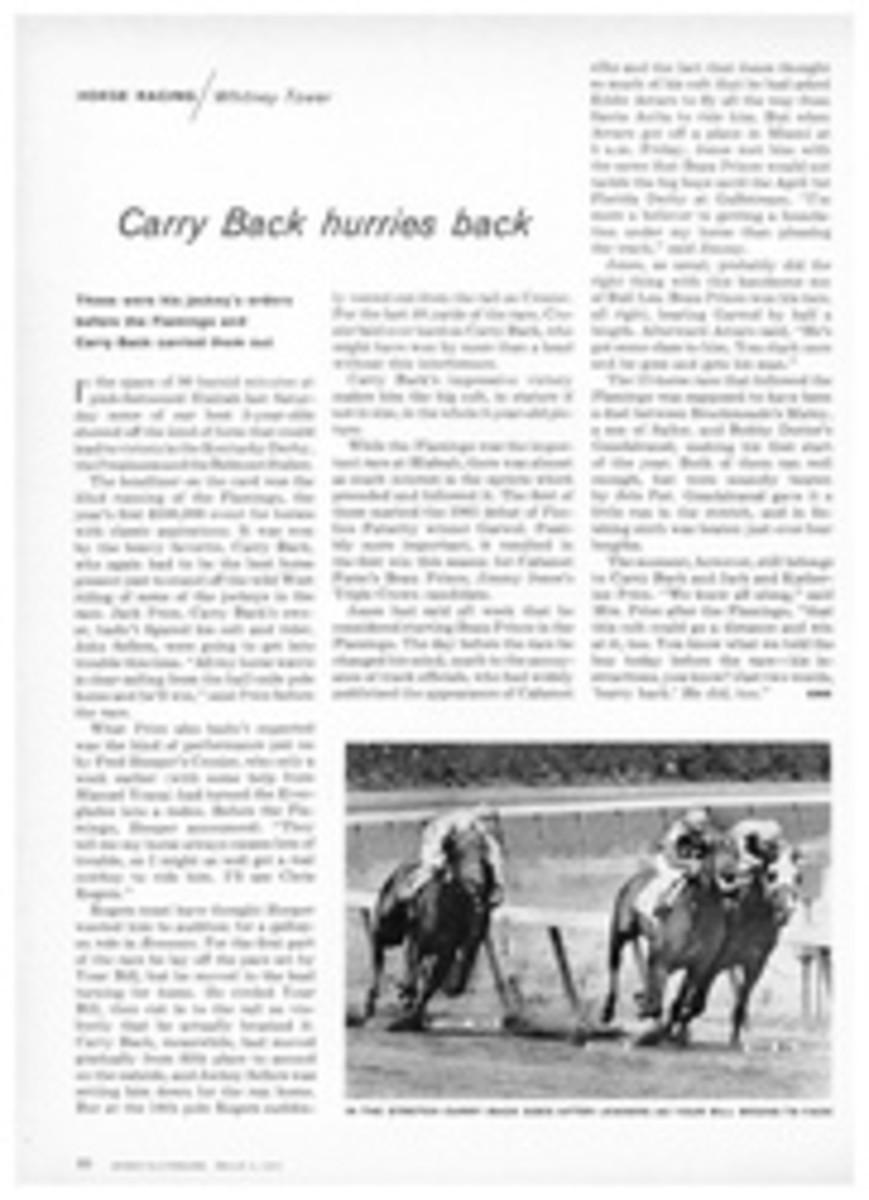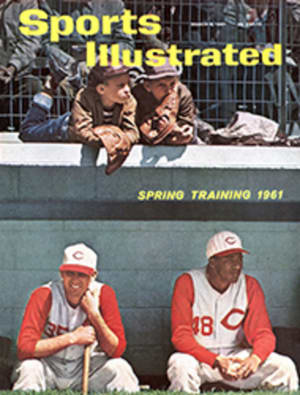
POINT OF FACT
? How are race horses named?
•Ideally a name should indicate some specific relationship to either the sire or the dam—or both (i.e., Native Dancer, by Polynesian out of Geisha). All names must be approved by The Jockey Club, and they may contain no more than 16 characters, counting all spaces and punctuation. Names used in the past 15 years are disallowed, as are famous names (e.g., Man o' War) and the names of stake races or racing stables. The Jockey Club may also refuse any name that sounds like, or is too similar to, a previously registered name or that hints of advertising or is in questionable taste. Names of living persons can be used only with their written permission.
? In the program Horse A is shown as part of the field. What does this mean and how did he get there?
•In pari-mutuel betting the totalisator holds only 12 betting units, and only tickets on this number can be sold. When there are more than 12 entries in a race, some must be counted as a single unit in the betting and these are then known as the field. Horse A was placed there by a track official (often in the mutuel department) because, in this man's opinion, he and the other horses in the field had the least chance of winning.
? In an entry, one horse is of superior ability, while his running mate is an ordinary plater who would be 100 to 1 were he running alone. The public has bet the entry down to even money, but at the starting gate the good half of the entry injures himself and is scratched by the stewards. The bad half of the entry finishes a poor last as expected. Is the public entitled to any refund?
•No. If the injured horse was not part of an entry, the money bet would be refunded. But since there is one horse to run for the entry, all bets stand.
? What is breakage?
•To simplify the already complicated pari-mutuel system, payoffs are made to the nearest nickel or dime, depending on the state. The odd pennies that result are known as breakage. In some states this is divided between the state and the track; in others it goes to either the track or the state; and in still others the track and the state divide the breakage after business for the meeting reaches a specific volume.
? Are there any race tracks in the U.S. that have a course with a right-hand bend?
•Only one, the Camino Real turf course at Santa Anita, Calif.
? How are post positions allotted?
•The post position, or the number of the stall that a horse breaks from, is entirely a matter of chance. After entries for a race have closed, the racing secretary takes the entry blanks, shuffles them and then picks one. Someone, often an owner or trainer, is invited to shake a numbered ball out of a bottle. The number that comes up is that horse's post position. This procedure is followed for all the horses in the race.
? At the start of a race, Horse A is left in the gate. What happens to the money that has been bet on him?
•If Horse A is not part of an entry or the field, the stewards determine whether the stall door of the starting gate failed to open or if he did not choose to run. If mechanical difficulties stopped A from running, all money bet on him is refunded upon the presentation of pari-mutuel tickets. If, however, the stall door opened and Horse A just did not run, no money is refunded.
ILLUSTRATION

